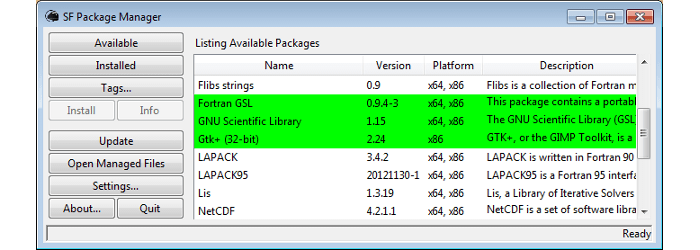

In 1966 the first standard endorsed by the American Standards Association (now ANSI) was established: Fortran 66. The issue of portability of programs (possibility of transferral between computers of different architecture) was born. In 1958 a variant, known as Fortran II, was introduced that was soon also implemented by other computer vendors it now became possible to transfer (Fortran) programs between computers with completely different instruction sets. This version, now referred to as Fortran I, was mainly restricted to IBM computers (notably the IBM 704 that, starting in 1957, was delivered with a Fortran compiler). The first version of the language was developed in 1954 by an IBM team lead by John Backus. 2 Some features of the language prior to Fortran 90.

This is because traditionally the Fortran compilers have been-and still are-strong in the optimization of computationally intensive tasks. In the specialized field of high performance computing, however, where computing runs lasting days, or even weeks, are common, Fortran still is the major language. In any case, by all sorts of metrics Fortran is far behind C, C++, and Java in popularity among programmers. Many programmers in need of such constructs switched to C, C++, and variants of these languages, and it is not to be expected that they will return to a modern form of Fortran. Until 1991, when the Fortran 90 standard was established, the language lagged behind in modern developments, such as recursion, pointers and dynamic memory allocation, object-oriented programming, etc. It is not likely that the modern versions of the language are applied as widely as the earlier versions. In principle, a modern Fortran 95 compiler can still translate a Fortran program written in, say, 1959 and prepare it to run on a present day computer. The existing body of Fortran programs being too large to rewrite into another computer language in a finite amount of time, it is likely that Fortran is here to stay - even more so since a very noticeable feature of all Fortran versions that have appeared to date is their "upward compatibility".

Fortran has always been the primary language for intensive (super)computing tasks, such as weather and climate modeling, oil reservoir simulation, computational fluid dynamics, computational chemistry, computational economics, and computational physics. As is true for any high-level language, Fortran statements are simple transcriptions of mathematical formulas that are independent of the instruction set of the computer on which the program is to be executed.įortran being the oldest high-level computer language, there is a huge legacy of Fortran programs in the scientific and engineering communities, with some of the programs exceeding a million statements. It was the first computer language that gave priority to humans over computers, meaning that Fortran users did not have to know machine instructions, as was required of computer programmers before the development of high-level languages. Fortran ( Formula translation) is the oldest high-level programming language.


 0 kommentar(er)
0 kommentar(er)
